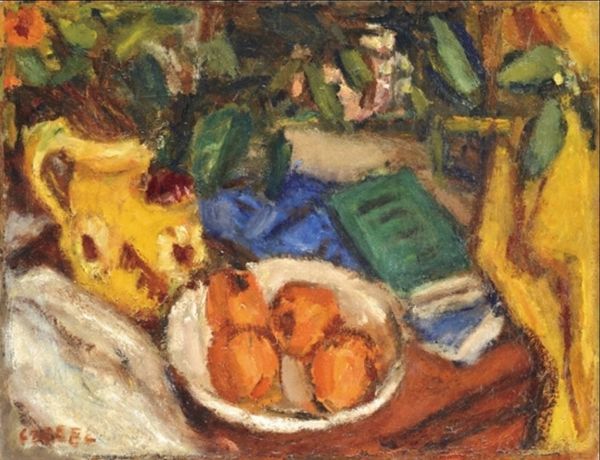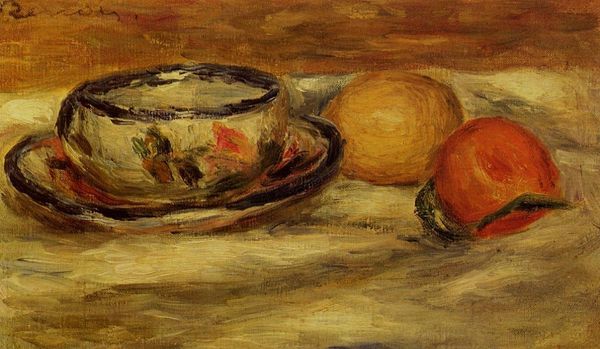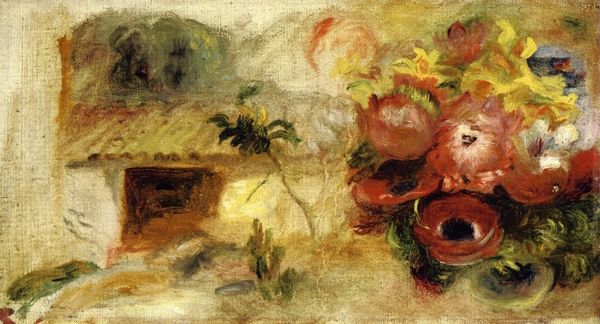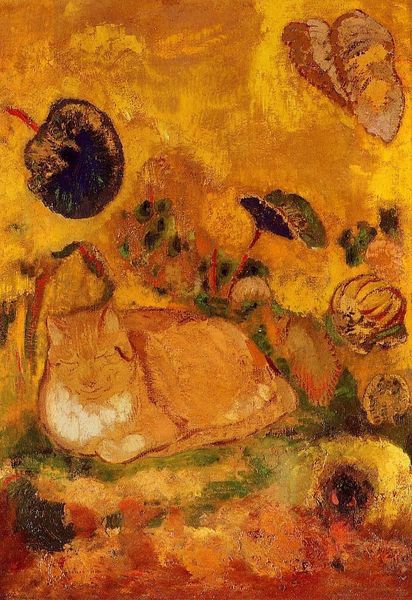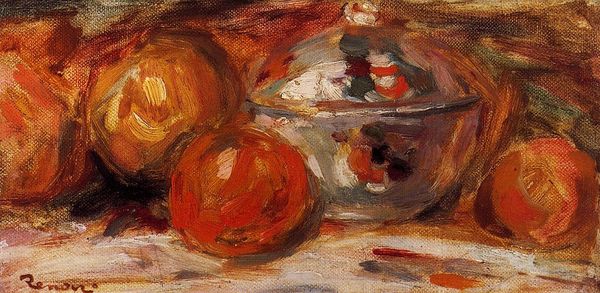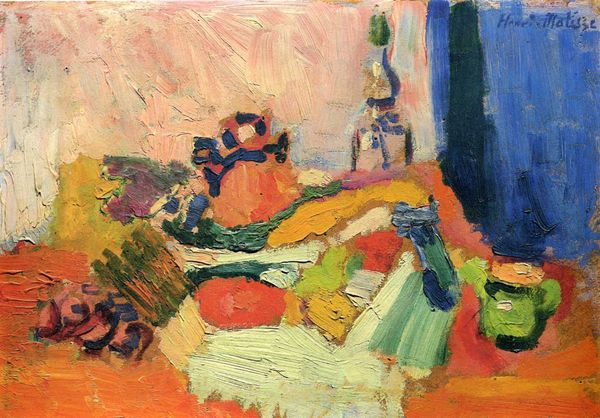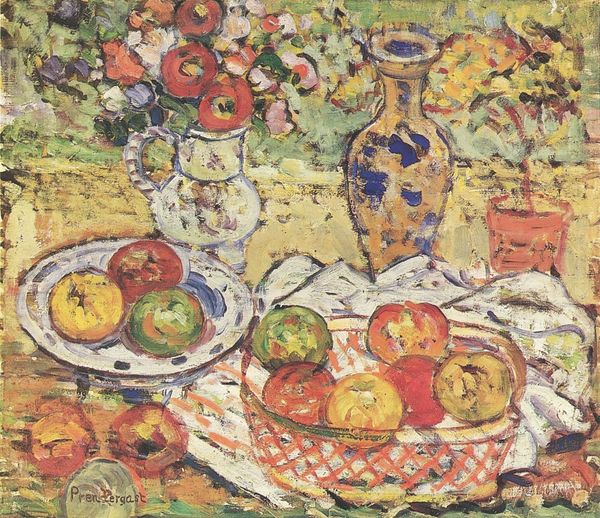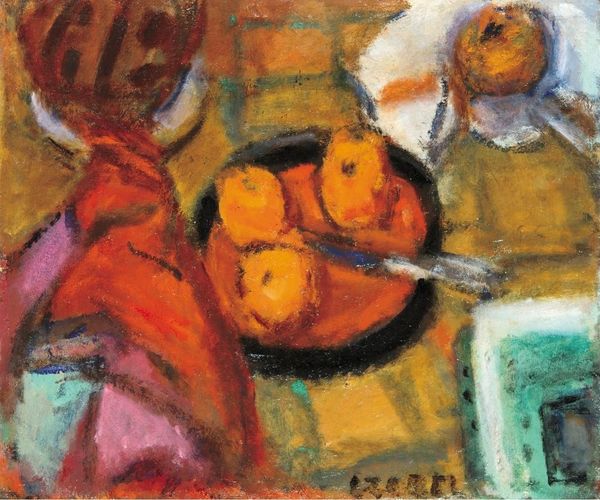
Studies Woman s Heads, Nudes, Landscapes and Peaches 1896
0:00
0:00
pierreaugusterenoir
Private Collection
Copyright: Public domain
Editor: This is "Studies Woman s Heads, Nudes, Landscapes and Peaches," painted by Pierre-Auguste Renoir in 1896 using oil paints. It's quite dreamlike. The figures and objects seem to float on the canvas. What do you see in this piece from a formalist perspective? Curator: The immediate appeal resides in the masterful manipulation of form. Notice how Renoir eschews clear delineations. Edges dissolve, colors bleed, creating a sense of unified optical experience. Consider the juxtaposition of textures: the implied smoothness of skin against the rough impasto of the foliage. How does that strike you? Editor: It almost feels unfinished, like a study rather than a completed work, with that layering effect. Is that deliberate? Curator: Precisely. Renoir isn't aiming for mimetic representation, but rather a distillation of sensory impressions through color and brushstroke. See how the repetition of the rounded forms—peaches, faces, breasts—creates a rhythmic visual echo. It all builds up to a play of visual sensations, color and composition, devoid of conventional subject-object hierarchy. Editor: So the subject isn't really the women or the landscape, but the act of seeing itself? Curator: In essence, yes. We are presented with a meditation on the properties of paint itself, on its capacity to evoke a feeling of lushness and sensuality. The tension between representation and abstraction invites contemplation on the very nature of perception. Editor: That's a great way to put it. It’s helped me look at it in a new light, moving beyond the representational elements. Curator: And hopefully, appreciate how much can be conveyed simply through the formal elements.
Comments
No comments
Be the first to comment and join the conversation on the ultimate creative platform.

